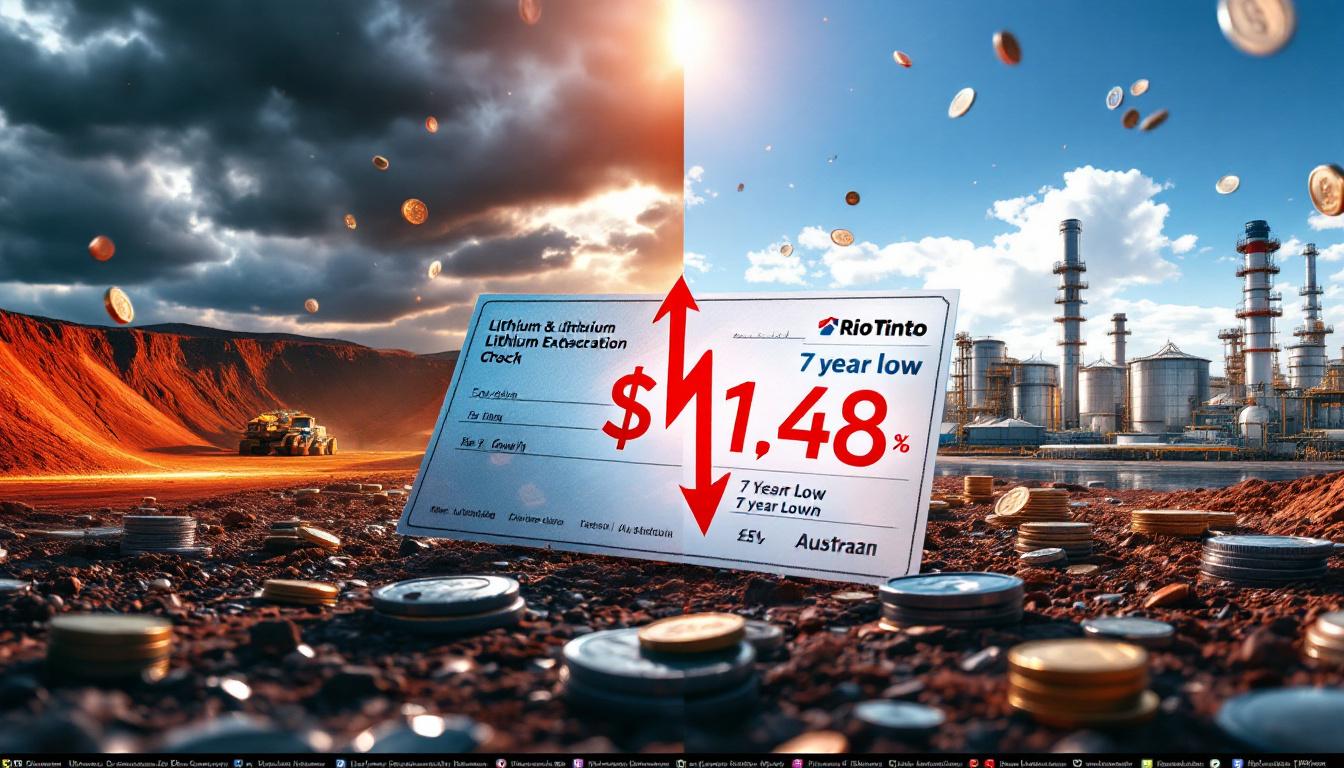Understanding the June 2025 Aluminum Processing Industry PMI Decline
The aluminum processing industry experienced a significant downturn in June 2025, with the composite PMI falling to 40.1%. This represents a substantial decline of 9.7 percentage points month-on-month and 1.5% year-on-year, pushing the index deeper into contraction territory below the 50-point threshold. This decline reflects widespread challenges across all sub-sectors of the aluminum processing industry.
Key Factors Behind the June Decline
- Intensified seasonal weakness: The traditional off-season effect was more pronounced this year than in previous cycles
- Elevated aluminum prices: Raw material costs hovering near 21,000 yuan/mt constrained downstream purchasing power
- Weak domestic demand: Consumer reluctance and slower cargo pickup rates across multiple sectors
- Inventory pressures: High finished product inventories forcing production cuts to restore balance
- Limited export relief: International trade uncertainties, particularly regarding unresolved US-China trade tensions
"The combination of seasonal weakness and cost pressures has created a perfect storm for aluminum processors, with downstream customers adopting a wait-and-see approach," notes the SMM analysis.
How Are Different Aluminum Processing Segments Performing?
The downturn has affected virtually all segments of the aluminum processing industry, though with varying degrees of severity.
Aluminum Plate/Sheet and Strip Segment
The plate/sheet and strip segment recorded a PMI of 39.1% in June, dropping a substantial 10.5 percentage points month-on-month. This represents one of the sharpest declines across all aluminum processing sectors.
Production and Order Metrics
- Production index: 29.2% (significantly below 50)
- New orders index: 29.2% (significantly below 50)
- Finished product inventories: 60.8% (indicating substantial inventory buildup)
- New export orders: 42.8% (higher than production but still in contraction)
Segment-Specific Challenges
Construction sector orders declined substantially, with project delays and cancellations becoming increasingly common. The high aluminum prices—hovering around 21,000 yuan/mt—have effectively slowed downstream purchasing as buyers delay orders hoping for price corrections.
Inventory backlogs have reached concerning levels, forcing many manufacturers to implement production cuts of 30-40% compared to normal operating rates. While there was some export boost from ongoing China-US trade consultations, the benefits were narrowly concentrated in specific applications like home appliances and kitchen products, providing insufficient relief for the broader segment.
Aluminum Foil Industry Performance
The aluminum foil industry recorded a PMI of 45.3% in June, showing a slight month-on-month pullback while remaining in contraction territory. This segment has demonstrated slightly more resilience than others but continues to face significant headwinds.
Key Performance Indicators
- Production index: 41.2% (below expansion threshold)
- New orders index: 41.2% (below expansion threshold)
- Finished product inventories: 52.8% (indicating continued inventory pressure)
- New export orders: 47.3% (contracting, showing insufficient export support)
Industry-Specific Issues
The industry has experienced a particularly sharp decline in packaging foil demand since April, creating ripple effects throughout the supply chain. An aggressive price war has driven processing fees to historic lows—as little as 5,800 yuan/mt in some cases, representing a multi-year low point for the segment.
Many manufacturers have resorted to "volume discount" strategies to maintain market share, despite the severe squeeze on profit margins these tactics create. Industry destocking efforts have fallen short of expectations, with inventory turnover rates declining by approximately 15% compared to normal seasonal patterns.
Construction Aluminum Extrusion Sector
The construction aluminum extrusion PMI pulled back to 40.44% in June, firmly below the 50-point threshold that separates expansion from contraction.
Critical Metrics
- Production index: 29.6% (sharp decline)
- New orders index: 37.69% (significant contraction)
- Procurement volume index: 29.15% (substantial reduction)
- Raw material inventories: 34.75% (companies maintaining minimal inventory)
Market Conditions
The real estate market remains stubbornly sluggish despite various stimulus attempts, with new project starts down approximately 12% compared to already-depressed 2024 levels. Companies report a severe shortage of new orders, with many operating at only 50-60% of capacity despite being in what traditionally would be a peak season.
The insufficient order backlog has proven inadequate to support current production levels, forcing widespread operational cutbacks. Intense competition has driven down processing fees for specialized products such as spray coating and thermal insulation bridge-cut extrusions, with some processors reporting fee reductions of 8-10% in just the past quarter.
Industrial Extrusion Performance
The industrial extrusion segment recorded a composite PMI of 37.61% in June, showing a sharp pullback below the 50-point threshold and indicating significant contraction.
Performance Indicators
- Production index: 30.33% (significant contraction)
- New orders index: 29.0% (substantial decline)
- Procurement volume index: 21.05% (dramatic reduction)
- Raw material inventories: 28.68% (minimal inventory maintenance)
Segment Dynamics
Several leading enterprises in the photovoltaic (PV) frame subsector reported significant production declines of 25-30% in June, reversing the growth trend seen earlier in the year. Meanwhile, processors serving rail transit, aerospace, and 3C (computer, communication, and consumer electronics) industries maintained relatively stable customer bases but reported intensifying price pressures.
The auto parts sector has been particularly hard-hit, with severe competition, order shortages driving capacity utilization below 45% in many facilities, and declining operating rates creating concerns about financial sustainability. Processing fees are expected to decline further in coming months, squeezing profitability to levels that may threaten the viability of smaller processors.
What's Happening in the Aluminum Wire and Cable Industry?
After four consecutive months of expansion, the aluminum wire and cable industry PMI fell below the 50-point threshold to 40.2% in June, marking a significant reversal of fortune for what had been a relatively bright spot in the broader aluminum processing landscape.
Key Performance Metrics
- Production index: 37.11% (significant decline in operating rates)
- New orders index: 31.42% (substantial reduction from May)
- Raw material inventory index: 43% (companies reducing stockpiles)
- Finished product inventory index: 37.76% (indicating inventory reduction efforts)
Market Dynamics
The concentrated delivery cycle for State Grid orders from the first half of 2025 has concluded, removing a key demand driver that had sustained the segment through earlier months. While new State Grid bidding opened in early June with initial optimism, it slowed significantly by mid-month, with order confirmations running approximately 35% below expected levels.
Rising aluminum prices combined with decreased shipments have significantly weakened procurement appetite, with many buyers adopting a wait-and-see approach. Companies across the segment are now focusing on dual reduction of raw material and finished product inventories to alleviate mounting financial pressure, with some facilities implementing four-day work weeks to manage costs while retaining skilled workers.
How Are Aluminum Alloy Markets Performing?
Primary Aluminum Alloy Sector
The primary aluminum alloy PMI dropped significantly to 36.5% in June, falling 5 percentage points month-on-month and deepening its contraction to concerning levels.
Critical Indicators
- Production index: 22.9% (new yearly low)
- New orders index: 22.9% (new yearly low)
- Product inventory index: 58.8% (high inventory levels)
- Procurement volume index: 26.5% (cautious purchasing)
- New export orders index: 50.0% (flat, relying on alternative channels like Mexico)
Market Pressures
Weak domestic demand during the seasonal lull has been exacerbated by broader economic uncertainties, with automotive and consumer goods manufacturers reducing production forecasts for Q3 2025. High aluminum prices—which have remained above 20,500 yuan/mt for most of June—continue to suppress terminal purchasing, with order quantities down 18-22% compared to seasonal norms.
Passive inventory buildup has created significant financial strain, with working capital requirements increasing just as cash flow slows. Operating rates across the sector show a "stable start followed by decline" pattern typical of seasonal weakness but amplified by cost pressures. Unresolved China-US tariff issues continue to limit export potential, with many producers exploring alternative channels through Mexico and Southeast Asia to circumvent trade barriers.
Secondary Aluminum Alloy Market
The secondary aluminum industry PMI rebounded slightly month-on-month to 45.0% in June but remained below the expansion threshold, indicating continued challenges despite modest improvement.
Market Conditions
Demand has deepened into off-season territory, with automotive producers—the primary customers for secondary aluminum—reducing order volumes by approximately 15% compared to May levels. Weak growth in end-user orders has limited upside potential for ADC12 prices, which have traded in a narrow band between 19,100-19,400 yuan/mt throughout June.
Low-priced supplies, particularly from smaller producers willing to sacrifice margins for cash flow, have intensified competitive pressure across the segment. The listing of cast aluminum alloy futures on June 10 temporarily boosted market activity and price discovery, but actual end-user consumption remained sluggish despite increased trading volumes in the financial markets.
What's the Outlook for July 2025?
General Industry Outlook
The aluminum processing industry faces continued headwinds in July, with limited prospects for immediate relief from current challenges:
- Continued off-season pressure expected across most segments through at least mid-August
- Limited improvement anticipated before seasonal demand returns in late Q3
- High aluminum prices likely to maintain pressure on downstream sectors
- Companies focusing on inventory management and cash flow preservation as primary survival strategies
Segment-Specific Forecasts
Aluminum Plate/Sheet and Strip
The plate/sheet and strip segment is expected to continue operating in the doldrums through July, with potential production cuts deepening if inventory reductions don't progress as needed. Industry observers are closely monitoring the effectiveness of destocking efforts, with particular attention to whether processing fees stabilize or continue declining under competitive pressures.
Recent government announcements regarding infrastructure investment may provide limited support by late July, but meaningful recovery appears unlikely before September's traditional demand upswing.
Aluminum Foil
The aluminum foil segment will likely see further PMI contraction in July as the price war intensifies among producers desperate to maintain market share. Processing fees are expected to remain under pressure, potentially dropping below 5,500 yuan/mt for standard packaging foil—a level that challenges the financial viability of all but the most efficient producers.
Cash flow challenges will likely force some smaller producers to reduce operating rates below 50%, while larger, integrated producers leverage their scale advantages to weather the downturn.
Construction Extrusion
Traditional off-season conditions will persist for construction extrusion producers, with the PMI likely to remain below the 50-point threshold through July and possibly August. Any significant improvement depends on real estate market recovery, which appears increasingly unlikely in the near term despite government stimulus efforts.
The recent announcement of specialized credit lines for affordable housing projects may provide some support by late July, but the impact will be limited and gradual rather than immediate.
Industrial Extrusion
The industrial extrusion segment will likely continue operating below the 50-point threshold, with ongoing monitoring of actual order implementation needed to gauge the depth and duration of the current downturn. The PV sector may see stabilization if recent policy support for distributed solar installations begins to translate into new orders.
Persistent profitability challenges from competitive pressure will continue forcing smaller processors to consider consolidation or exit strategies, potentially accelerating industry concentration that was already underway before the current downturn.
Aluminum Wire and Cable
The wire and cable segment is expected to continue operating below the 50-point mark through July, with companies focusing on dual reduction of raw material and finished product inventories to preserve financial health. The industry awaits the next delivery cycle for State Grid orders, which traditionally begins in August but may be delayed this year due to budget constraints.
Recent announcements regarding rural power grid upgrades may provide some support by late July, but the scale and timing remain uncertain.
Primary Aluminum Alloy
The primary alloy segment faces further downward pressure on its PMI in July, with the triple challenges of seasonal weakness, trade issues, and cost concerns creating a particularly difficult operating environment. Production rates may drop below 60% of capacity at many facilities, with some smaller producers considering temporary shutdowns to minimize losses.
Any substantial recovery depends on clearer trade policies and cost relief, neither of which appears imminent. Producers are increasingly exploring alternative export markets in Southeast Asia, India, and Mexico to compensate for limited access to traditional markets.
Secondary Aluminum
The secondary aluminum PMI will likely remain below the 50-point threshold in July, with potential production cuts by automakers due to high-temperature holidays and seasonal maintenance further suppressing demand. The traditional summer slowdown in automotive production—typically 10-15% below spring levels—will continue to suppress new order growth and operating rates.
Pricing may see modest support from reduced scrap availability, but this will further squeeze margins rather than stimulate demand.
What Are the Broader Market Implications?
Supply Chain Dynamics
The current downturn has triggered widespread production cuts across aluminum processing segments, creating a domino effect throughout the supply chain. Inventory management has become critical for financial stability, with many companies implementing sophisticated just-in-time procurement strategies to minimize working capital requirements.
Raw material purchasing has become increasingly cautious, with order quantities down 25-30% from normal levels and lead times shortened to minimize price risk exposure. Processing fee competition has intensified across multiple segments, creating margin pressure that threatens the viability of higher-cost producers and accelerating industry consolidation.
Pricing Pressures
High aluminum prices—hovering near 21,000 yuan/mt—continue to create downstream resistance, with many buyers delaying orders in hopes of price corrections. Price wars have erupted in specific segments, particularly packaging foil and construction extrusion, driving processing fees to levels that challenge profitability across the industry.
Volume discount strategies have become increasingly common as producers sacrifice margins to maintain market share and operating rates. Limited pricing power amid weak demand conditions has created a buyer's market that shows little sign of reversing in the near term.
Financial Considerations
Cash flow preservation has become the top priority for aluminum processors, with many companies implementing aggressive cost-cutting measures and operational streamlining. Dual inventory reduction strategies—targeting both raw materials and finished products—have become standard practice as companies seek to free up working capital.
Cautious procurement strategies aim to minimize financial exposure to price volatility, with many buyers shifting to shorter-term contracts and spot purchases despite the operational inefficiencies this creates. Profitability across the industry remains under pressure from competitive processing fees, with EBITDA margins compressed to half their five-year averages in many segments.
The ongoing fluctuations in commodity price trends have further complicated forecasting and risk management efforts for aluminum processors. Meanwhile, industry participants are increasingly implementing market volatility strategies to protect against sudden price movements.
FAQ: Aluminum Processing Industry Outlook
Why is the aluminum processing industry experiencing such significant contraction?
The industry faces a perfect storm of challenges: intensified seasonal weakness, elevated raw material costs with aluminum prices near 21,000 yuan/mt, weak domestic demand across multiple end-use sectors, high inventory levels creating financial strain, and limited export relief due to ongoing trade uncertainties with major markets like the United States.
This combination of factors has created a more severe downturn than the typical seasonal pattern, with the 9.7 percentage point month-on-month PMI decline representing the largest single-month drop since June 2020.
Which aluminum processing segments are most affected by the current downturn?
All segments are under pressure, but primary aluminum alloy (36.5% PMI) and industrial extrusion (37.61% PMI) show the deepest contractions. The plate/sheet and strip segment also experienced a dramatic 10.5 percentage point decline to 39.1%, making it among the hardest-hit sectors.
The wire and cable segment's reversal—falling below 50% after four months of expansion—represents a particularly concerning development, as it had been one of the few bright spots in the broader industry landscape.
How are companies responding to these challenging conditions?
Companies are implementing multiple survival strategies, including production cuts of 20-40% across most segments, reducing raw material purchases to minimize price exposure, maintaining minimal inventories of both inputs and outputs, focusing on destocking finished products to free up working capital, and in some cases adopting "volume discount" strategies to maintain market share despite margin pressure.
More financially robust companies are also using the downturn as an opportunity for strategic acquisitions, accelerating the industry consolidation that was already underway before the current challenges emerged.
What factors could improve conditions in the aluminum processing industry?
Several developments could help reverse the current downturn:
- Resolution of China-US tariff uncertainties would immediately improve export prospects
- Stabilization or reduction in aluminum prices would stimulate downstream purchasing
- Effective implementation of recently announced policy support measures, particularly for infrastructure and affordable housing
- Recovery in the real estate sector, which remains a key demand driver despite diversification efforts
- Natural conclusion of seasonal weakness as demand patterns shift
Ready to Catch the Next Major Mineral Discovery?
Gain an edge in ASX small-cap investing with Discovery Alert's proprietary Discovery IQ model, delivering instant notifications when significant mineral discoveries are announced. Explore our dedicated discoveries page to understand how major mineral findings can generate substantial returns for early investors.




